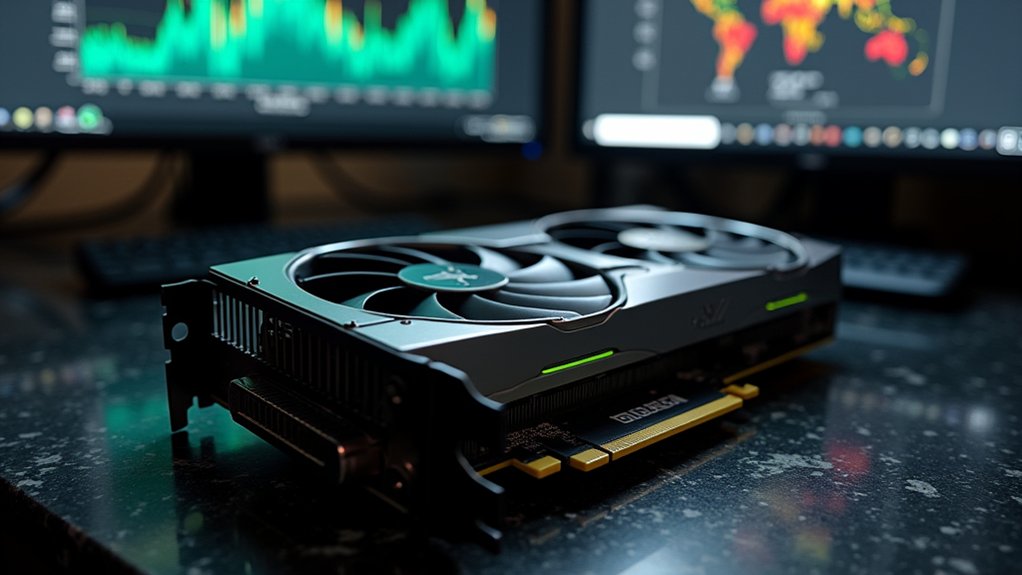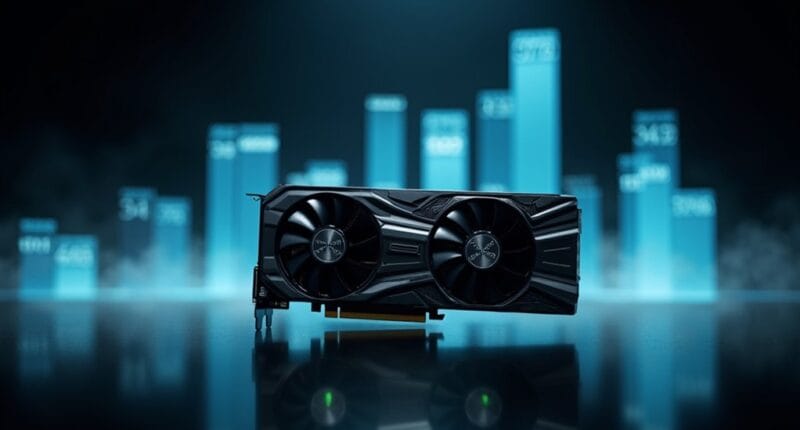The RTX 5060‘s raw performance numbers look impressive, doubling framerates in games like Hogwarts Legacy and S.T.A.L.K.E.R. 2 compared to its predecessor. At $299, it’s tempting. But here’s the catch: early benchmarks are limited, and full reviews are still weeks away. The card’s DLSS 4 tech and 3840 CUDA cores sound great on paper, but smart buyers might want the complete picture before jumping on this potentially game-changing GPU.

How does NVIDIA’s latest budget GPU stack up against its predecessors? The RTX 5060, launched in May 2025 at $299, is turning heads with some seriously impressive performance numbers.
Let’s be real – these aren’t just minor improvements we’re talking about. The raw performance data is, frankly, ridiculous. At 1080p with max settings, this thing crushes games like Hogwarts Legacy at 234 FPS, more than doubling the RTX 4060’s 111 FPS. S.T.A.L.K.E.R. 2? 208 FPS versus the 4060’s measly 99. And if you’re upgrading from a 3060, prepare for your jaw to hit the floor – we’re seeing performance increases of up to 5x in some titles.
Under the hood, the RTX 5060 sports a base clock of 2280 MHz, boosting up to 2497 MHz. The memory runs at a zippy 28 Gbps effective speed. NVIDIA’s packed in their latest DLSS 4 technology, complete with Multi Frame Gen and ray reconstruction. It’s basically a tech buzzword party in there. The card’s impressive 3840 CUDA cores deliver substantial processing power for demanding games. Built on TSMC’s advanced 4N process node, this GPU promises excellent efficiency and performance.
But here’s where things get interesting – and a bit murky. Early previews have been limited, with restricted testing conditions. Sure, the numbers look fantastic, but the lack of thorough benchmarks at launch is raising eyebrows. Publications are promising full reviews within two weeks, but who wants to drop three hundred bucks based on partial data?
The card sits at an interesting spot in the RTX 50 series lineup. There’s a notable 28-32% performance gap between this and the Ti version, and the memory bandwidth situation might make some demanding titles at higher resolutions a bit sketchy.
The value proposition? Well, that’s complicated. Look, the performance gains are undeniable. This thing absolutely demolishes its predecessors. But with limited reviews and some unanswered questions about real-world performance, maybe waiting for those full benchmarks isn’t such a crazy idea. After all, $299 isn’t exactly pocket change.





